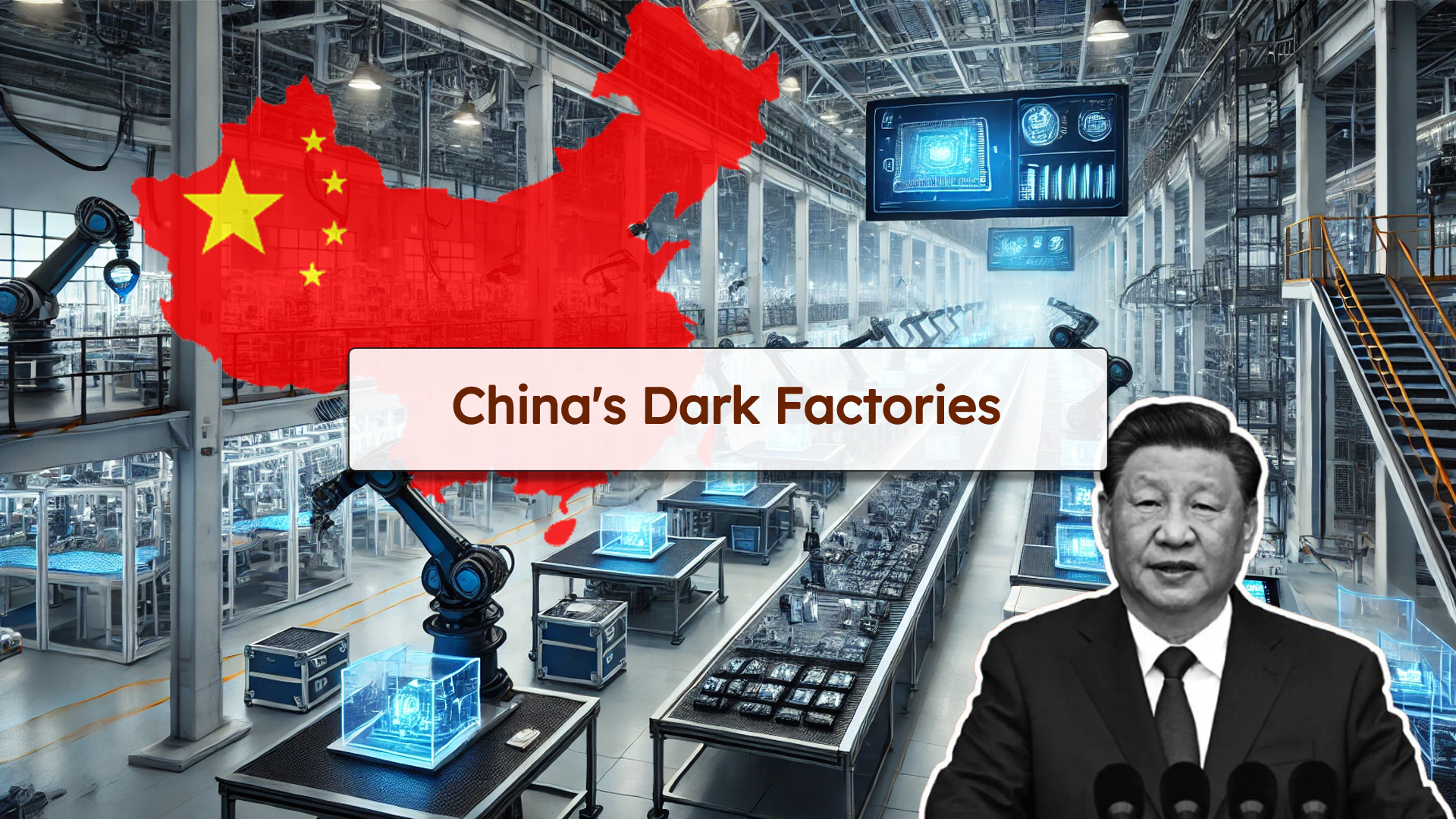China is advancing rapidly in industrial automation with the emergence of “dark factories”—fully automated manufacturing facilities that operate without human intervention, often without lighting, as machines do not require it. These factories utilize artificial intelligence (AI), robotics, and the Internet of Things (IoT) to enable 24/7 production, significantly enhancing efficiency and productivity.
What is a Dark Factory?
A dark factory is a fully automated manufacturing facility where production lines run autonomously, requiring minimal or no human presence. The term “dark factory” originates from the fact that these facilities do not need lighting, as no workers are present on the factory floor. Instead, robotic arms, AI-powered systems, and advanced logistics networks handle every aspect of production, from assembling products to quality control and packaging.
Key Developments in China’s Dark Factories:
- Xiaomi’s Smart Factory: Located in Beijing’s Changping District, Xiaomi’s factory exemplifies the dark factory model, producing one smartphone per second without human intervention. The facility leverages advanced robotics and AI to maintain continuous, precise operations.
- Foxconn’s Automation Initiatives: Foxconn has been integrating automation into its manufacturing processes, replacing 60,000 workers with robots in one of its Kunshan factories in 2016. The company aims to automate 30% of its operations by 2025, reflecting a broader trend toward reduced human labor in manufacturing.
- Megvii’s Model Workshop: Megvii, a Chinese AI company, has developed a dark factory model workshop for a household motor manufacturer in Zhejiang province, showcasing the adaptability of dark factory principles across various industries.
Implications of Dark Factories:
- Economic Efficiency: Dark factories reduce labor costs and minimize human errors, leading to more consistent product quality and lower operational expenses.
- Labor Market Impact: The shift toward automation poses challenges for employment, particularly for workers in repetitive or hazardous jobs. This transition necessitates workforce retraining and adaptation to new roles in the evolving industrial landscape.
- Global Competitiveness: By embracing dark factory technology, China aims to strengthen its position as a leader in advanced manufacturing, aligning with initiatives like “Made in China 2025” that focus on technological innovation and self-reliance.
While the widespread implementation of dark factories is still in progress, these developments indicate a significant shift toward fully autonomous manufacturing in China, with profound implications for the future of global industry.


